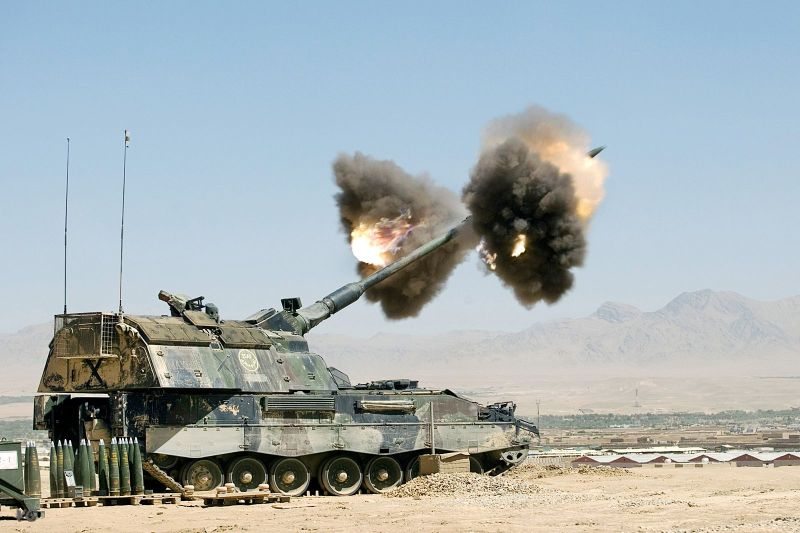The U.S. Army and Raytheon have fired 10 precision-guided Excalibur projectiles during the final phase of compatibility testing at Yuma Proving Ground. This live-fire demonstration, funded by the U.S., Germany and supported by Raytheon-funded initial testing, marked the completion of a multi-phase assessment that verified Excalibur’s compatibility and performance with the PzH2000 self-propelled howitzer.
During the testing, the PzH2000 fired 10 Excalibur projectiles at targets at ranges from nine to 48 kilometers. Every round delivered precision effects, striking within three meters of the targets, reaffirming warhead lethality and the required three fuze modes.
Average miss distance at 48 kilometers was less than one meter. Additionally, the PzH2000 test demonstrated the projectile’s ability to maneuver from the ballistic trajectory to an offset target.
“These trials clearly demonstrate Excalibur’s ability to provide true precision to the PzH2000, giving warfighters in multiple nations a superior advantage on the battlefield,” said Michelle Lohmeier, vice president of Raytheon Missile Systems’ Land Warfare Systems product line.
“The PzH2000 is one of many highly capable cannon artillery systems currently deployed, and now we’ve proven that it can fire the only mature, true precision solution available today.”
Similar capabilities were proven during Excalibur testing in October from the Swedish Archer and U.S. howitzers.
The German Ministry of Defence is evaluating Excalibur within a competitive framework with a down-select planned in 2014.
“Warfighters around the world recognize the benefits of precision artillery like Excalibur,” said Lt. Col. Josh Walsh, the U.S. Army Excalibur program manager. “Raytheon’s Excalibur is a combat proven solution that has been fielded and used in combat since 2007 with nearly 700 firings in coalition operations.”
Additional testing this calendar year will include a First Article Test for Excalibur Ib, which will verify its production readiness.
Raytheon has also funded a program to augment its combat-proven 155mm GPS-guided projectile with a laser spot tracker seeker, giving the weapon a dual-mode capability. The company is planning a live-fire demonstration of the “Excalibur-S” early next year.










